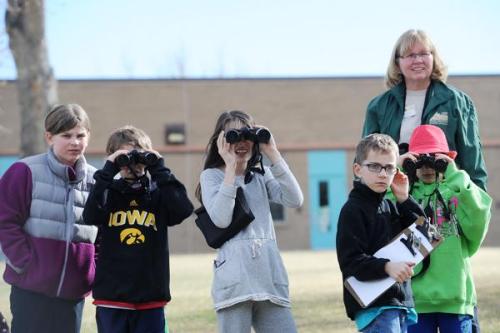Latest News

Schools Gain in Nature-Based Learning
By Jim Tolstrup
Reporter-Herald Guest Writer
The High Plains Environmental Center is extraordinarily pleased about the groundbreaking for the new High Plains School this week — on Earth Day.
Over the years we have worked with schools throughout the Thompson School District including: Van Buren, Truscott, Big Thompson, Centennial, Cottonwood Plains, Ponderosa, and Namaqua elementary schools, Walt Clark Middle School, and Ferguson and Mountain View high schools.
This Earth Day we would like to acknowledge the inspired parents and teachers who have brought nature-based learning to life within the district.
Since Richard Louv’s “Last Child in the Woods: Saving Our Children From Nature-Deficit Disorder” was published in 2005, there has been an ever-increasing focus on getting students of all ages connected with their natural surroundings.
This movement toward building outdoor classrooms and nature playscapes has been literally grassroots almost always originating with a small and inspired group of parents and teachers. On a muddy day I set out to interview a few of the individuals whose passion has breathed life into these projects.
Big Thompson Elementary
At Big Thompson Elementary School, I spoke with Christa Ahrens and Kerri Rollins, both parents of children who attend the school. In 2009, Big T staff decided to pursue a nature and science designation for the school. Because many of the teachers had already pursued additional training in environmental education, the designation was a natural fit for what was already being incorporated into the classroom. Great things were happening inside of the school including the conversion of an unused classroom into an interactive science lab, and they wanted to turn their attention to the outdoor space around the school.
Aside from the nature playscape, there is a 4-acre outdoor classroom adjacent to the school. Teachers at Big T invite other schools to attend field trips on-site and Big T students conduct the tours, giving presentations on soils, geology, plants and pollination.
Namaqua Elementary
Michele Mandeville’s passion for the wild began in early childhood when she played outdoors and learned about wildlife and nature. As an adult, her connection to nature was rekindled when, after a personal tragedy, it was the place that she went to for solace and healing. She wanted her own children to have access to the restorative and sustaining quality of nature.
Michele volunteered to organize and lead trips to nearby natural areas, such as Bobcat Ridge, while being an active parent during her children’s preschool years. She enjoyed seeing the spark of curiosity that it ignited in the kids. She commented about how simple it is to get kids connected with nature “just by going outside, noticing small things, bird calls, the color of a flower, and letting them lose themselves in the environment a little bit.”
This led to Michele starting an outdoor club, Namaqua Outdoors, at her children’s school, Namaqua Elementary, which led to the desire to build an outdoor classroom at the school. The funding for the garden comes primarily from within the school community. High Plains Environmental Center donated native wildflowers and grasses.

The outdoor classroom, now substantially completed, has native shrubs, grasses and flowers encircling a seating area beneath a large old cottonwood that will provide dappled shade. Ironically, the spot where the outdoor classroom is being built was covered by rabbitbrush and native plants until a decade or so ago when parents raised money to turn it into a “nice” irrigated turf area. Fortunately the trend is now going in the opposite direction and we have an opportunity to restore Colorado’s unique native bio-diversity in schools.
Activities in the outdoor classroom include having students adopt a shrub or tree for a year and track its seasonal changes. Kids measure the influx of birds and butterflies that visit when the native garden is done, track them, learn about them and write about them.
Centennial Elementary
Stacee Kersley, a Loveland-based architect, was disgusted by the way the stormwater pond looked at her daughter’s school, Centennial Elementary. It was a mud pit, and the neighbors were concerned about the standing water in the pond.
Stacee worked with Jim Birdsall, a landscape architect, to develop a concept for landscape improvements. The concept was presented at a PTA meeting, the group decided to pursue it and dedicated fundraising proceeds to the project.
Cara Scohy, a CS Design Inc. landscape architect, donated a detailed landscape plan. As the concept evolved the custodial staff were consulted to make sure the plan didn’t go beyond their means to maintain it.
The vision for the project is much more than beautification; it will be a literal classroom with stones for seating and a focus on local ecology, native plants and their relationships with pollinating insects and birds, as well as water conservation and watershed protection.
Stacee talked about the special quality of engaging community volunteers for projects like this “it has to be mutually beneficial” she said. Planting by volunteers is a personal investment in the project. She recalled how, on one wet June day, a previous superintendent was out wearing fancy dress shoes and planting trees in the mud along with a group of bedraggled students and their families. Twenty years down the road those students will be able to come back with their kids and say “look how it’s grown” and that builds a very personal connection.
Jim Tolstrup is the executive director of the High Plains Environmental Center,www.suburbitat.org.

